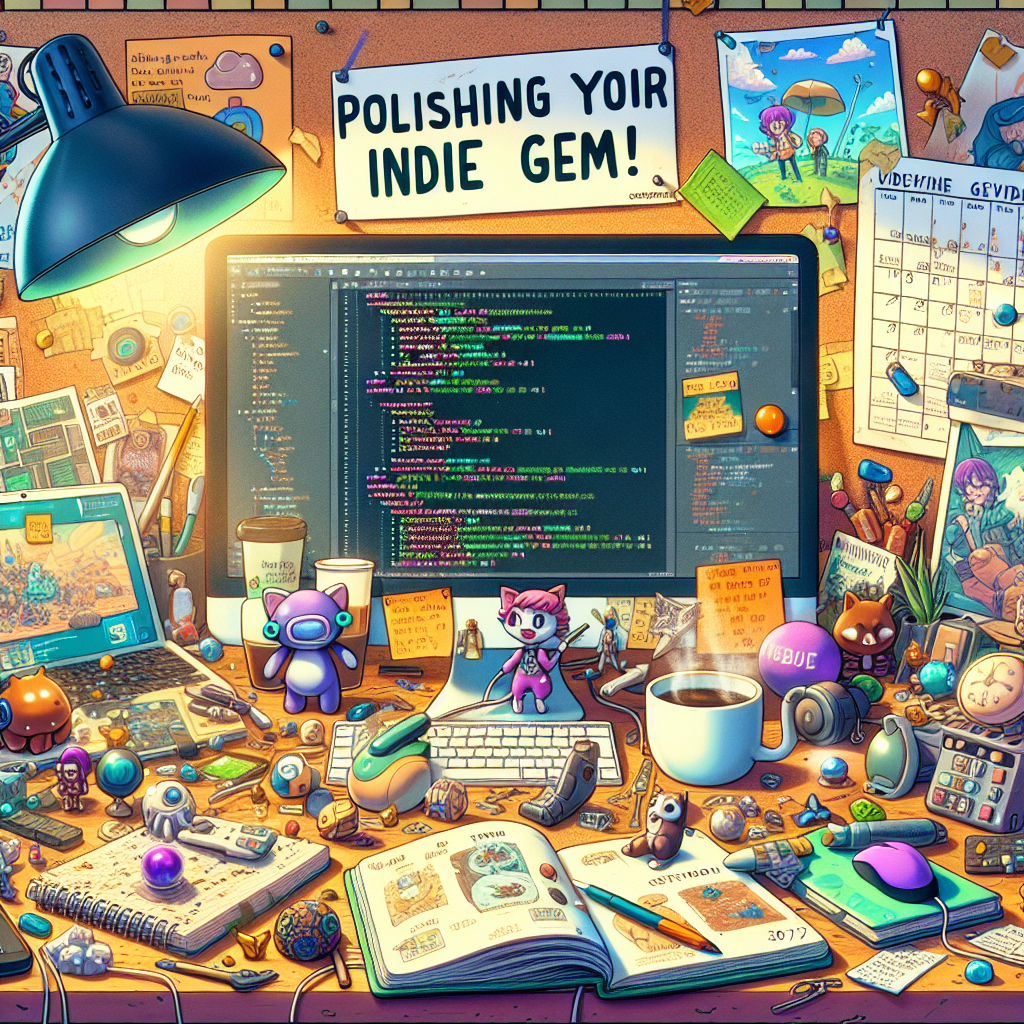Polishing Your Indie Gem: Tips for Game Design and Development
In the ever-evolving landscape of video games, indie developers carve out a unique niche, producing captivating titles that often challenge the status quo. However, bringing an indie game to life is not just about having a creative concept; it’s also about refining and polishing the project to ensure it resonates with players. Here are some essential tips for indie game design and development that can help turn your indie gem into a polished masterpiece.
1. Understand Your Audience
Before diving into the design and development process, it is crucial to understand the target audience for your game. Consider conducting surveys, participating in gaming communities, or playing games within your genre to grasp what players enjoy. Knowing your audience will guide design decisions, storytelling, and even marketing strategies, ensuring that the game resonates with its intended players.
2. Focus on Core Gameplay Mechanics
The core gameplay mechanics are the heart of your game; they should be both engaging and intuitive. Start by outlining the key mechanics and refining them through prototyping. Keep testing these mechanics to determine what works and what doesn’t. Be honest with yourself and be ready to make tough decisions, such as cutting features that don’t enhance gameplay or contribute to player enjoyment.
3. Prioritize User Interface (UI) and User Experience (UX)
An effective UI and UX are paramount for retaining players. A cluttered or confusing interface can frustrate even the most enthusiastic player. Spend time on designing clean, user-friendly menus, in-game prompts, and feedback systems. Conduct playtests to gather feedback specifically about the usability of the interface. Sometimes, simple tweaks can make a significant difference in how players interact with your game.
4. Create Compelling Art and Aesthetic
Visuals play a critical role in attracting players and immersing them in the game world. Whether you are creating pixel art, 3D models, or hand-drawn graphics, ensure that your art style is cohesive and complements the game’s theme and tone. Invest time in refining your art assets and consider making mood boards or style guides to maintain consistency throughout the development process.
5. Craft a Captivating Narrative
While not all indie games require an extensive storyline, having a compelling narrative can greatly enhance players’ emotional connection to the game. If your game has a story, focus on characters, dialogue, and world-building. Develop a concise narrative arc with clear motivations and conflicts. Use storytelling techniques, such as foreshadowing and character development, to create an engaging experience that keeps players invested.
6. Implement Feedback Loops
Feedback is essential in the development cycle. Regularly seek critiques from peers, playtesters, and members of your target audience. Be open to both positive and negative feedback, and look for common themes in the critiques to identify areas for improvement. Iterating based on feedback can significantly enhance the quality of the final product.
7. Optimize Performance and Compatibility
Technical issues can derail even the best game concepts. Strive for optimized performance across different hardware specs. Test your game on various devices and operating systems to ensure it runs smoothly. Pay attention to load times, frame rates, and overall stability. A polished game is not just about visual appeal; it also needs to perform effectively to keep players engaged.
8. Marketing and Community Building
Polishing your indie gem is not solely a development challenge; marketing is equally vital. Build a community around your game even before launch. Utilize social media platforms, create a website or a blog, and engage with forums and communities interested in indie games. Sharing your development journey can create buzz and foster a sense of connection with potential players. Regular updates and transparency can maintain interest and excitement.
9. Embrace Post-Launch Support
The journey doesn’t end once your game is launched. Post-launch support is crucial in maintaining momentum and building a loyal player base. Be prepared to address bugs, listen to player feedback, and implement updates or new content. Showing that you care about player experience can turn initial buyers into lifelong fans.
Conclusion
Polishing your indie gem is a multifaceted process that encompasses gameplay mechanics, art, narrative, and community engagement. By focusing on these areas, indie developers can create immersive, enjoyable experiences that stand out in a crowded marketplace. Passion and creativity are the driving forces in indie development, but the care taken in polishing each aspect of the game can make all the difference. So roll up your sleeves, embrace feedback, refine your vision, and get ready to shine!




